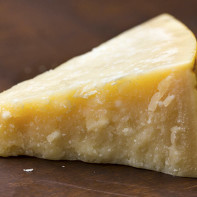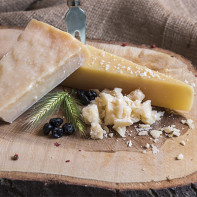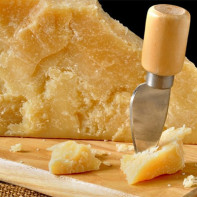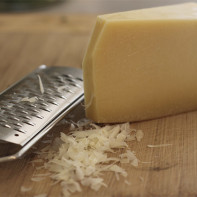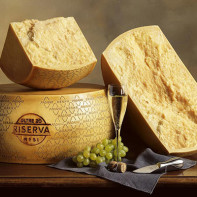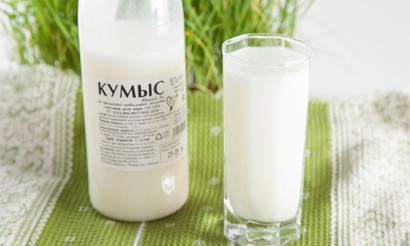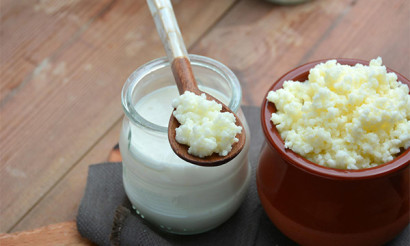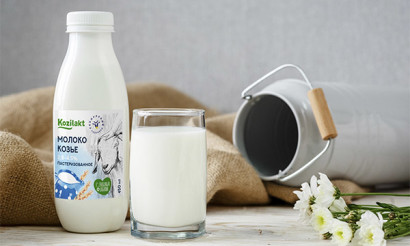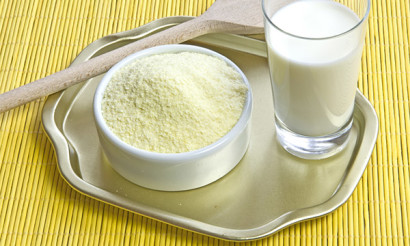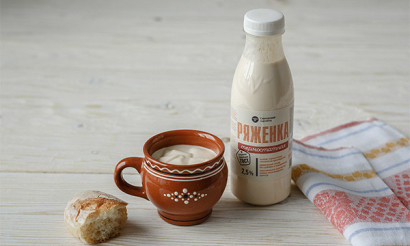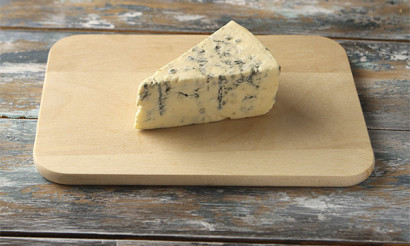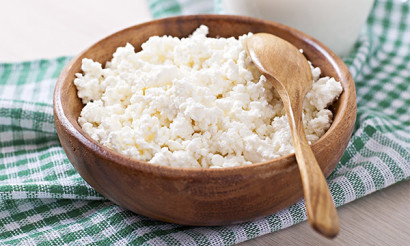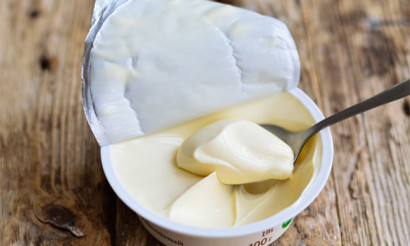Parmesan cheese: benefits and harm to the body
Parmesan is a type of hard cheese that comes from cow's milk and has a brittle structure. The procurement of the product is carried out in the period from April to November. In this case, the milk collected on the previous day, from which the cream has already been removed, is mixed with the raw materials collected the next morning, and subjected to heat treatment in special containers. This is done in order for the reproduction of lactobacilli. After this, the rennet is added, which is necessary for folding the liquid into lumps of the future cheese product. The resulting curd lumps are collected from the tub, immersed in molds and left to glass all the serum. After a day, the future cheese is salted for a week in brine. After that, the product is sent for ripening. This takes up to two years.
- Types of Parmesan
- What is the difference between Parmesan cheese and ordinary
- Composition and calorie content
- What is the use of Parmesan cheese?
- General benefit
- For women
- For men
- During pregnancy
- When breastfeeding
- For children
- When losing weight
- The use of parmesan in cooking
- What to eat with
- What can be replaced
- Harm and contraindications
- How to choose and store parmesan cheese
- Is it possible to freeze
- How to soften dried parmesan
- Why parmesan is moldy
- How to make Parmesan at home
- What can I cook with Parmesan: recipes
- Baked pepper appetizer
- Rustic chicken pie
- Interesting facts about Parmesan
To prevent the formation of voids and the development of mold, each circle, which can weigh up to 40 kg, must be periodically tapped, turned over and wiped if necessary. The most optimal cheese aging period is considered to be a time period from a year to three years. During this period, the product matures in a room where special temperature requirements are observed. The result is a cheese with a pleasant nutty flavor and a special flavor.
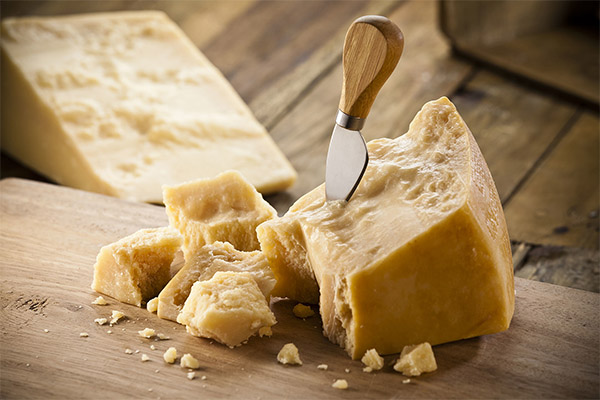
To cut the delicacy use special knives with the principle of a wedge, which break it into small pieces. If the product breaks, crumbles and is cut unevenly, then the cheese is ready. A stamp with a quality mark is applied to cheese circles, after which they are sent for sale.
European laws prohibit calling cheese parmesan if it was made in other countries using Italian technology.
Types of Parmesan
Parmesan is of three types:
- A young one that matures within 1–1.5 years. The product is served as a snack and dessert. It goes well with fruit.
- Old cheese, the ripening period of which is one and a half to two years. In cooking, it is used for cooking main dishes and hot snacks.
- Very old cheese that ripens for two to three years. It is recommended to use in a grated state. It is used in the manufacture of pizza, as well as to give the finished dish a specific taste.
The ripening period of parmesan does not always take three to four years. Some varieties of the product can last up to ten years in the store before going to the stores for sale. It is worth noting that the longer a dairy product matures in a warehouse, the harder it becomes. The grains of such a product are more pronounced.
What is the difference between Parmesan cheese and ordinary
High-quality Parmesan has a sharp-salty flavor with a touch of hazelnuts and fruits. Such a product differs from other types of cheese not only in its taste, but also in structure. Due to the dense consistency, the cheese can be crushed with a very fine, airy chip. When exposed to high temperatures, it is able to melt evenly, becoming covered with a golden crust, which solidifies during the preparation of baking. Due to these properties, the cheese product can be used to obtain various salads and main dishes.
The calorie content of parmesan is much less than other types of cheese.
Composition and calorie content
In the process of ripening, parmesan gains many useful components.It has a protein that is involved in the formation of skin cells, muscles, as well as in the production of various enzymes and hormones in the human body. This cheese contains more than 30% protein. Such a product is digested very quickly - in less than an hour.
Parmesan also contains calcium in combination with vitamin D. These components play an important role in ensuring healthy bones.
Vitamin A as part of an Italian product has properties that are important for vision and has a positive effect on the health of the skin and teeth. In addition, this substance takes part in metabolism.
Also, the cheese delicacy is rich in saturated and unsaturated fatty acids, essential and essential amino acids.
Of the mineral elements in Parmesan, iron, phosphorus, zinc, and potassium are also found. All these components, vitamins and other beneficial substances are quickly absorbed due to the fact that the product creates a greasy environment.
The calorie content of Parmesan cheese (per 100 g) is 383 kcal.
What is the use of Parmesan cheese?
General benefit
Italian-made cheese should be included in the diet of every person, since it has many useful properties. First of all, it should be noted that the product is a fast source of protein and calcium, because it is absorbed in 40–45 minutes. Parmesan has the ability to renew the cells of the body thanks to amino acids, as well as protect cell membranes.

The product does not contain lactose, which allows it to be included in the menu of people prone to the development of allergic reactions.
Cheese delicacy normalizes digestion, stimulates the formation of gastric juice and intestinal motility. It can be used to prevent the development of chronic constipation. He takes part in the reproduction of beneficial bacteria that provide the intestines with normal microflora, which prevents the development of dysbiosis. Also, the use of the product is the prevention of osteoporosis, the development of caries.
For women
Parmesan helps to relax the nervous system, reduce the manifestations of stress and depression. Cheese has a high nutritional value. So, a small piece of this product can relieve hunger for several hours. Since the product improves metabolic processes, it indirectly affects the reduction of body weight.
The positive effect of parmesan on the condition of the hair, skin and the health of the nail plate is also known.
For men
Cheese helps strengthen the muscle corset, which is especially important during physical exertion.
Parmesan in the human diet is the key to sound sleep. Specialists even note that the product has an anticonvulsant effect, takes part in the production of hormones and enzymes.
During pregnancy
During the period of carrying the baby, the pregnant diet should consist only of healthy products. Most varieties of cheese are contraindicated during this period. This applies to soft grades of the product, as well as species that contain deep mold.
Parmesan is a hard cheese with unique properties. It can be consumed during pregnancy. It can be of great benefit to both the mother and her baby, even if the product is obtained from milk that has not been pasteurized. This is explained by the fact that this cheese is characterized by a low level of humidity and a low pH. This is achieved in the long ripening process. Such conditions contribute to the extinction of harmful bacteria.
In the production of parmesan, no preservatives or chemical additives are used. This product is considered one of the safest varieties of the delicacy, which has a long shelf life. Even if stored at room temperature for two weeks, the product remains usable. However, it is recommended that you consult a doctor before using this delicacy.
When breastfeeding
Parmesan cheese has many useful characteristics.Vitamin and mineral composition helps to normalize the digestion process, strengthen immunity, improve lactation.
In some cases, the product should not be taken with breastfeeding. It should limit the use of cheese in the pathology of the urinary system, as cheeses contain sodium salts that can be deposited in the kidneys.
Fatty cheese makes breast milk more fat. As a result, the front milk is enough for the child to saturate, although it is not as useful as the back milk. Also, such products can cause a baby to have colic and loose stools.
You can enter cheese into the diet of a breast-feeding woman from the first month after the birth of the baby. Use the product should be in small portions, constantly monitoring the condition of the child.
For children
Hard Parmesan is known for having a number of positive ingredients. First of all, it is worth noting that the product is a source of animal protein (especially for children who do not like meat and milk). In addition, calcium and phosphorus are found in cheese. They take part in the development of the child’s skeletal system. Vitamins in the Italian delicacy strengthen the children's body.
However, this cheese has some disadvantages. Parmesan is still a fatty product that can put a strain on the digestive system, which has not yet fully formed. Excessive consumption of parmesan is dangerous for children with a high salt content. You also need to remember that cheese, like most dairy products, can cause an allergic reaction, so you must carefully enter the product in the diet of children who are prone to allergies.
Regarding the timing of the introduction of such hard cheese in the diet of a child, some believe that the product is difficult to digest by the child's body. Therefore, it is recommended to introduce Parmesan in baby food no earlier than three years of age. Some people believe that the first test should be done after reaching 12 months. Regarding the time of administration and daily allowance at each age, it is recommended to consult a pediatrician who observes the child.
You can give hard cheese to a child no more than 2-3 times a week. It can be added in grated form to porridge, omelet or mashed potatoes. To reduce the salt content in parmesan, it can be soaked in water for several hours.
When losing weight
There is debate as to whether parmesan can be used while dieting. On the one hand, it is a delicacy of dairy origin, which is easily digested, and also saturates the body with useful substances. On the other hand, cheese has a rather high degree of fat content, which cannot lead to weight loss. Nevertheless, the product is in the list of dietary products, therefore, you can include it in the diet menu. In this case, you need to follow some rules:
- Eat parmesan better in the morning and no more than two slices.
- It is important when losing weight not only to follow a diet, but also to increase physical activity.
- During weight loss, the goal should be not only weight loss, but also the preservation of health. Therefore, to preserve muscle mass, you can use this cheese to make salads, sandwiches, combine the product with pasta of hard varieties.
Adding parmesan in the right proportion will not only allow you to get rid of extra pounds, but also diversify your diet with healthy dishes that are enriched with vitamins and mineral elements.
After training, cheese will help your muscles recover.
The use of parmesan in cooking
In Italy, parmesan is considered an integral part of the table, like bread in our regions. It is crushed in order to sprinkle salads, added to pizza, pasta and various soups. Use this component when baking vegetable and meat delicacies in the oven. As a result, the dish becomes golden and crisp.
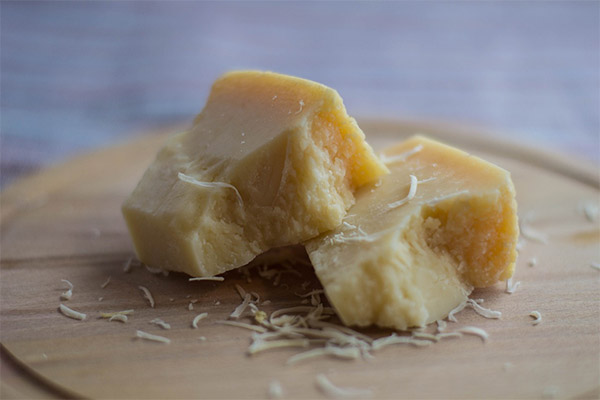
Cut such a treat with an ordinary knife will not work. The cheese has a solid, but at the same time brittle structure, and it is usually cut into small pieces that have an irregular shape.A special sharp knife with a rounded handle serves for this purpose.
What to eat with
At home, this type of cheese is number one. Its use depends on the ripening period. Parmesan, which has ripened for a year, is usually used as a snack for young wine with fruits and nuts.
Two-year-old parmesan is added to salads, combined with pasta, fruits and vegetables. For example, navy pasta with Parmesan is the most popular Italian dish.
The cheese, aged two or three years, goes well with red wine. If you cut such a product into plates, season with balsamic vinegar, you get a good snack option for a home party or banquet.
Parmesan is able to diversify any recipes. Grated cheese is used for baking tomatoes, zucchini, and risotto is prepared from it. It is recommended to hold a little hard cheese at room temperature before slicing. This will reveal the aroma and pleasant taste of the product.
Of course, parmesan is an ingredient in pasta. Italians even have a saying that says that such a dish without the use of this cheese is like a woman without a nose.
What can be replaced
Cheese is an ingredient in various recipes. However, the classic recipes of some dishes involve the use of hard cheese, which is not so easy to find in the store. It is also quite expensive, so some simply can not afford it. Parmesan cheese is characterized by a brittle and granular structure, so when exposed to high temperatures, threads do not form on the dishes. To prepare the head of such cheese, it takes half a ton of milk and about three years to ripen. Naturally, the price of the finished product will be rather big. Therefore, most housewives wondered how to replace it.
For these purposes, any other hard cheese is suitable. If the taste of this cheese is important in the recipe, only the Italian product “Grana Padano” can become the only replacement option.
Harm and contraindications
Italian cheese, unfortunately, has some limitations and contraindications. Monosodium glutamate in the composition of the product is a preservative, therefore, for a weakened or immature child organism, this substance is dangerous by the occurrence of allergies or poisoning.
Sodium in large quantities is in itself dangerous to human health. It is recommended to consume no more than 2.3 g per day, so you should not use parmesan as the main food. People over 50 years old, as well as patients with diabetes mellitus and hypertension should also include this product in their menu with caution. Sodium is dangerous because it is able to retain water in the body, interfering with the normal functioning of the excretory system, so cheese is contraindicated in kidney diseases.
Also, Italian hard cheese should not be used as food for exacerbations of gastritis, pancreatitis, and stomach ulcers.
How to choose and store parmesan cheese
The choice of parmesan requires special attention.
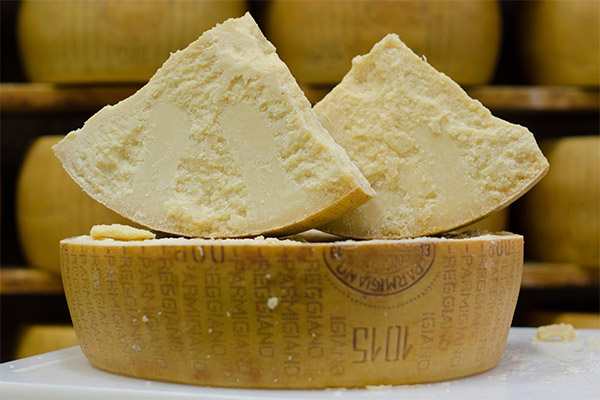
- You should buy a piece of cheese that is cut from the head in the presence of the buyer. Only in such a product will the excellent taste of parmesan be preserved. It must be remembered that such cheese has the ability to absorb odors, so it should not lie in the refrigerator next to sausages and other products that can ruin the flavor.
- Real Italian parmesan should have the imprint of the quality mark on the head of “D.O.P”, pre-packaged pieces should have the label “P.D.O”.
- The denser the parmesan, the longer it ripened. It is important to examine the appearance of the product. A high-quality product has the color of baked milk and a golden crust of not more than 5-6 mm.
- The cheese has a granular consistency. It is impossible to cut, pieces of such a delicacy break off. Amino acids in mature parmesan provide a sandy structure to the product. "Holes" in such cheese should be no more than 2 mm in diameter.
- You should also consider the smell of the cheese product. Fresh cheese has the smell of milk and grass. For the old, a more pronounced smell and dense consistency is characteristic. Cheese, which is more than two years old, is characterized by a variety of tastes.
Parmesan can be stored in the refrigerator for several months. From the time of manufacture, the cheese head can be stored for up to six months in the refrigerator, while maintaining all the taste and nutritional properties. However, this is true if storage is carried out at a temperature not exceeding 8 degrees.
If the cheese is bought in shredded form, it can be stored in the refrigerator only for a week.
Before placing a piece of such cheese in the refrigerator, it must be wrapped in parchment and foil.
Is it possible to freeze
Parmesan tolerates the freezing process. Under the influence of low temperatures, the cheese will not lose its useful properties, moreover, it will retain its shape and will not crumble. Such a product can be stored in the freezer for two months.
When storing parmesan in the freezer, several rules should be followed. Pieces of cheese should weigh from 250 to 500 g, it is better to cut it into pieces so that when thawing it is enough for a week's use, since the shelf life of thawed cheese should not exceed seven days.
Before removing the Italian delicacy from the freezer, it is recommended to hold it a little on the bottom shelf of the refrigerator.
The shelf life of cheese in the freezer depends on how it is processed. If there is a solid piece of parmesan, it can be kept in the freezer for up to six months; when storing slices, the shelf life is reduced to three months.
Defrosting should be carried out gradually, first in the refrigerator, and then for some time at room temperature.
Do not defrost the product in the microwave. So the cheese will simply melt, and all its useful components will be lost.
How to soften dried parmesan
A dried piece of cheese will be very difficult to grind. If fresh, it has a solid structure, then dried it will be almost stone. Such a product can only be used for making pizza, risotto, vegetable salads.
To soften parmesan, you can soak it in cool milk for several hours. Some housewives use a microwave for this purpose, but in this case it is important to monitor the cheese so as not to overexpose it.
Why parmesan is moldy
Over time, mold spots may appear on the surface of the cheese. This is due to infection by mold spores that are present in the external environment. The reason for this is often high humidity. Most often, such spots are harmless, and you can solve the problem by removing the damaged areas. But there are strains that are very toxic.
To remove mold, you can moisten a piece of clean cloth in a weak solution of vinegar and wipe the cheese or use a special brush designed to clean the cheese products.
To protect parmesan from the development of mold, reduce the humidity level in the room. You must regularly turn the cheese over.
How to make Parmesan at home
Skim milk or a low fat product is recommended. It will take 4 liters of milk, 80 g of thermophilic starter culture and rennet. Heat the milk to 38 degrees, add the fermentation, after which the mixture is thoroughly mixed. After 40–45 minutes, the rennet should be dissolved in 100 ml of cold water, gently pour into milk and mix for five minutes.Then the mass must be left for 60–90 minutes so that the curd curls and is ready for cutting. After that, using a long knife, cut the cottage cheese into cubes by a centimeter and leave for another 10 minutes to harden the curd mass.
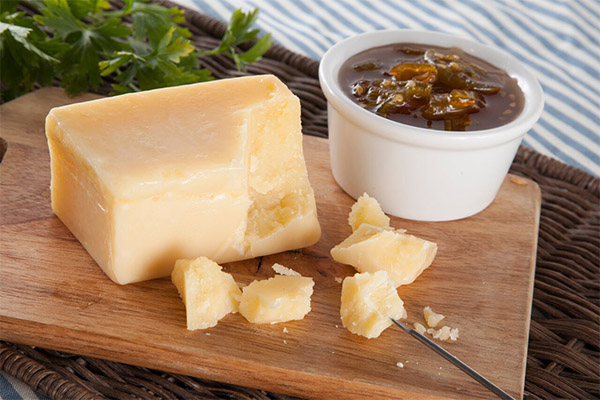
Cottage cheese is slowly heated to 51 degrees for 40 minutes, constantly stirring. At this temperature, you need to leave the curd for 20-30 minutes. Then drain the serum using a colander covered with gauze.
Gently shift the cheese into a mold for further pressing under a press of 5 kg for half an hour. Next, remove the cheese from the press and turn it over, then press for another 12 hours under 10 kg oppression. After this time, carefully remove the product and transfer to a concentrated salt solution for 28-30 hours. During this time, it should be turned several times to form a uniform crust.
Then remove the cheese from the solution, dry it and put it on a flat surface to obtain a hard crust. The maturation of homemade parmesan requires at least five months. During the first 14 days, the delicacy should be turned over daily, then once a week. This is done to dry evenly. Parmesan should be checked regularly for mold. Every three months, the cheese must be greased with olive oil.
What can I cook with Parmesan: recipes
Baked pepper appetizer
You can make a baked pepper snack using hard cheese. So, you will need 4 bell peppers, a few tablespoons of olive oil, a clove of garlic, a tablespoon of breadcrumbs, a few tablespoons of parmesan and spices to taste.
Pepper must be greased with oil, put on a baking sheet covered with paper and sent to the oven until the peel of vegetables begins to burst. After this, peppers should be cooled and peeled off. Peeled vegetables should be cut into strips. Next, fry the crushed garlic in a frying pan in oil, then add pepper. Stew the mass for about 20 minutes, then add salt and spices, sprinkle them with breadcrumbs and mix. It remains only to lay the pepper on a plate and sprinkle with grated parmesan.
Rustic chicken pie
To prepare a rustic pie with chicken and parmesan, you need 0.5 kg of puff pastry, 0.5 kg of boiled chicken, a glass of boiled rice, 150 g of cheese, a glass of cream, 0.5 cup of broth, 2 eggs, as well as herbs and spices.
Chicken should be finely chopped, mixed with rice and grated cheese delicacy, add herbs, spices and mix thoroughly. It is necessary to lay out sheets of dough on baking paper so that a square forms, which is two times larger than future baking. Put the filling in the center of the square, grated parmesan along the entire perimeter of the dough. Then roll up the edges of the dough and tightly squeeze the corners. The pie should be transferred to a baking sheet, pour cream and chicken broth and pour previously beaten eggs on top. Bake the cake until golden brown at a temperature of 180 degrees for half an hour.
Interesting facts about Parmesan
- To obtain parmesan, milk is used in cows, which adhered to a special diet. They should be fed exclusively with hay and grass. Various feed, silage, etc. in this case are prohibited.
- More than 3 million heads of Italian cheese are produced annually, while the weight of one can reach 40 kg.
- In Italy, people work in cheese production who check the quality of parmesan by tapping the product with a special hammer. It depends only on them what quality a particular cheese head will receive.
«Important: all information on the site is provided exclusively in fact-finding purposes. Before applying any recommendations, consult with a profile specialist. Neither the editors nor the authors are liable for any possible harm caused materials. "

